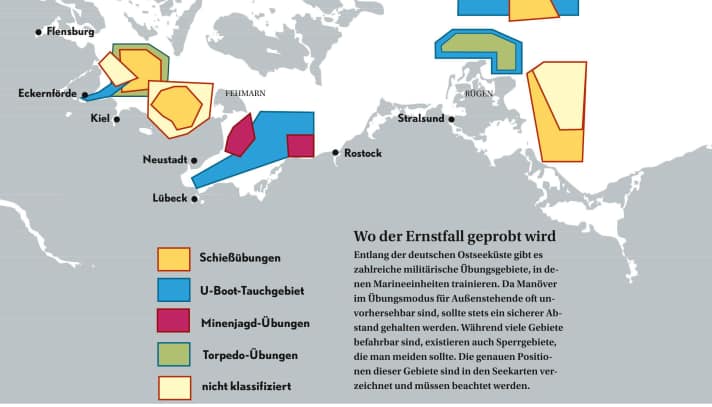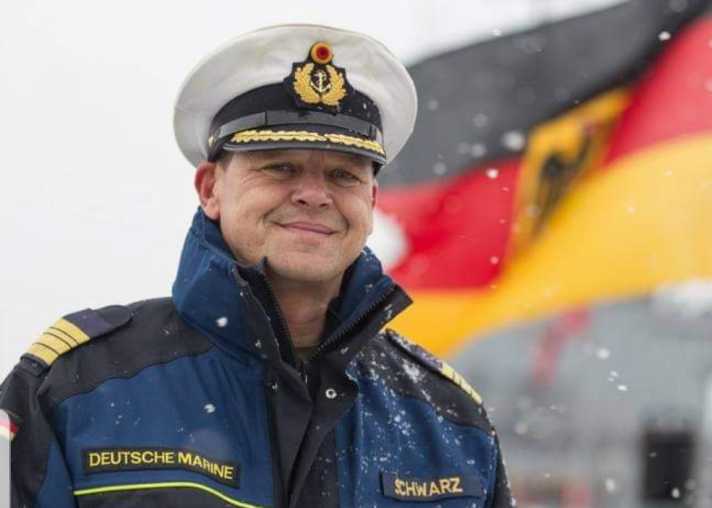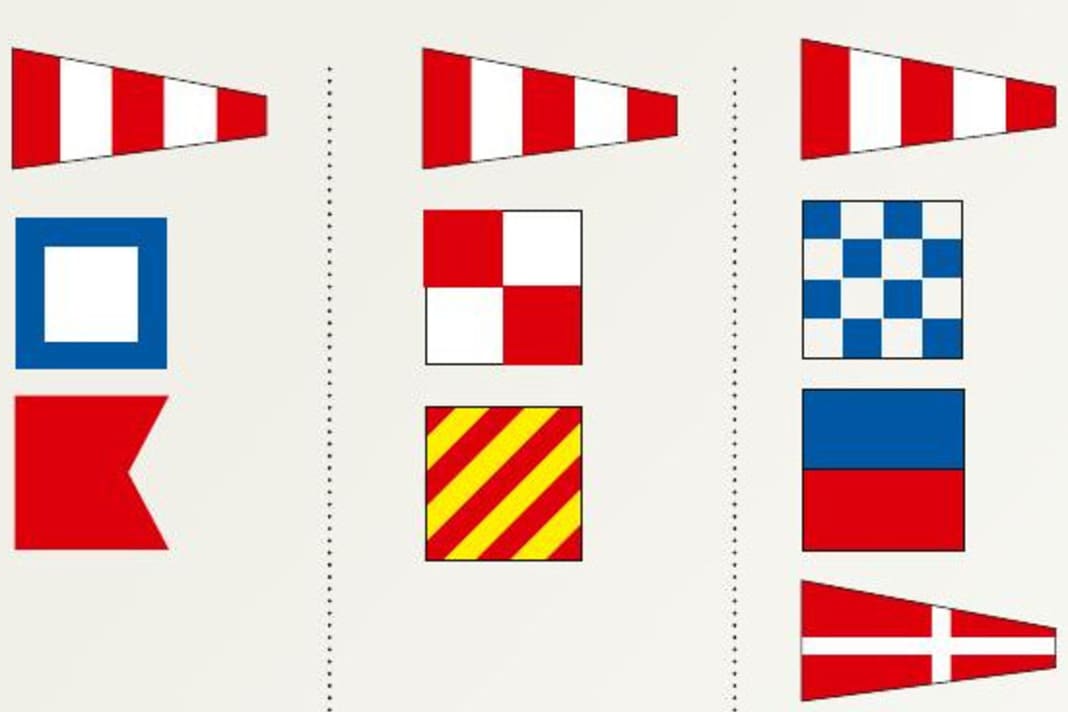Bundeswehr: Naval presence in the Baltic Sea: the right behaviour for recreational boaters
Fabian Boerger
· 12.06.2025

Viewed from a pleasure craft through the lenses of binoculars, the grey ships of the navy are a spectacle. But they also symbolise what politicians and experts have been proclaiming for months. The keywords are "turning point" and "the situation is serious". It also raises the question of how recreational boaters should behave. After all, you would think that encounters with warships along the German Baltic coast have recently increased. But has the number of naval vessels really increased? Or has the view of the grey fleet just changed and are people now more aware of them? Above all, what should skippers do if they come close to a warship or even unexpectedly get caught up in an exercise?
Leisure oasis versus naval manoeuvring area
The starting point is February 2022, when Russia invaded Ukraine. Since then, the Baltic Sea has become the scene of a hybrid conflict. The inland sea is much more than just a leisure oasis and a popular spot. On the one hand, there are the transport routes. Hundreds of freighters and tankers start their journey into the world from here. On the other hand, there is various infrastructure on, near and under the sea. Wind farms, for example. Or thousands of kilometres of electricity and internet cables, oil and gas pipelines that run along the bottom of the Baltic Sea. Several dubious incidents have shown just how vulnerable these and other facilities are.
The naval training areas along the German Baltic coast are located here:

Shadow fleet, spy ships and sabotage
One of these occurred on Christmas Day 2024 and involved the "Eagle S", an oil tanker from the so-called shadow fleet. This refers to ships that Russia uses to circumvent international sanctions. In the Gulf of Finland, the tanker dropped anchor at full speed and damaged the "Estlink 2" submarine cable. It supplies Estonia with electricity from Finland. Both countries regard the incident as an act of sabotage, controlled by Russia.
There are also unusual cases of ships drifting alongside pipelines or power lines for long periods without a localisation signal. According to the German Institute for International and Security Affairs, they scout the critical infrastructure. European security services assume that there are hundreds of such Russian spy ships.
The problem is that under international maritime law, coastal states cannot simply stop activities outside their territorial waters. The list of such unusual incidents could go on and on. It illustrates why security authorities repeatedly emphasise the need to be vigilant.
German Navy ready for an emergency
The German naval forces recently adapted their strategy. In mid-May, they presented the "Naval Course 2035" in Berlin. The concept includes specific measures derived from the experiences of the war in Ukraine. Deterrence is a component of this strategy. It also emphasises rapid operational readiness and the use of new technologies, among other things. Moscow should be able to see this: Germany is ready for an emergency.
And it's not just in Moscow that this is becoming apparent. Many recreational boaters have also long since noticed that ships from the navy and allied countries have become more present in this country. This is intended to demonstrate operational readiness, says Martin Schwarz, frigate captain and former commander of the Navy's 3rd minesweeper squadron. However, this presence is not designed for escalation.
"We react to actions that occur and show that we are monitoring the situation and can act if necessary." Frigate Captain Martin Schwarz
Schwarz explains that more ships are regularly travelling throughout the Baltic Sea. However, this does not mean that the number of German naval vessels has also increased. In fact, this has actually decreased in recent years. According to Schwarz, the feeling that more ships are travelling is partly due to increased public interest. "I have the impression that people are now paying closer attention to what the navy is doing, where and how."

However, not every naval vessel you come across is involved in defence against acts of sabotage or espionage. In most cases, it is naval units that train for emergencies. This is the case in the Bay of Kiel, off Rügen and especially in the Bay of Lübeck. Naval training areas are located there. They are marked accordingly on the nautical charts.
Exercise mode not always obvious
However, exercises are not always recognisable as such. "Even I sometimes can't recognise what they're doing," says frigate captain Schwarz. For example, naval vessels in exercise mode may not behave as they would under normal conditions. They can suddenly change their direction of travel or suddenly slow down or accelerate. Schwarz: "You have to be prepared for this when travelling through training areas."
How to recognise marine exercises
Flags of the international alphabet, which naval vessels hoist during exercises, can provide information. They signal when you should keep away or when this is absolutely necessary. It is also advisable to consistently monitor channel 16. If things get tight, naval crews will contact the pleasure craft by radio.
The situation is more strictly regulated in the shooting and restricted areas - for example off Putlos or Schönhagen. Recreational boats are not allowed to use these areas when practising. Yellow barrage buoys and security vehicles keep the area clear. Information about shooting times is also provided by radio and online.
Nevertheless, there are times when pleasure craft enter the areas illegally. Some are driven by curiosity, others by ignorance, says Schwarz. Nobody has to fear being shot at, as the exercises are then stopped. But it can be expensive, as a fine may be imposed.
You should be aware of these signals:



These major manoeuvres are planned for 2025
And even away from the training areas, the grey ships are likely to catch the eye of one or two pleasure boaters this summer. Major manoeuvres are planned off the German Baltic coast again in 2025.
- One of these is the annual NATO exercise Baltic Operations (BALT-OPS). Around 30 international warships and even a US aircraft carrier are expected in Warnemünde harbour. In addition to military cooperation, the focus is on defence against drones. The manoeuvre starts on 5 June in Rostock and ends on 20 June with a joint entry at the Kieler Woche.
- Another extensive series of exercises with international participation takes place from August to September with the so-called Quadriga which will involve soldiers from the navy, air force and army. It includes several training sessions at various locations in Europe.
- One is the "Roll to Sea" exercise (18 to 29 August), in which a mass emergency at sea is simulated off Rostock.
- Another sub-exercise is called Northern Coast. Among other things, the rapid deployment of troops to the NATO flank is being rehearsed. From 29 August one of the locations is Rostock harbour.
In addition to these major actions, there will be various smaller exercises along the German coasts. The Baltic Sea has become a central theatre of geopolitical developments. For pleasure boaters, however, the direct effects are minor and vigilance and consideration are part of good seamanship anyway. Anyone who is forced to change their course or even their sailing plans because of a military exercise should show understanding.

